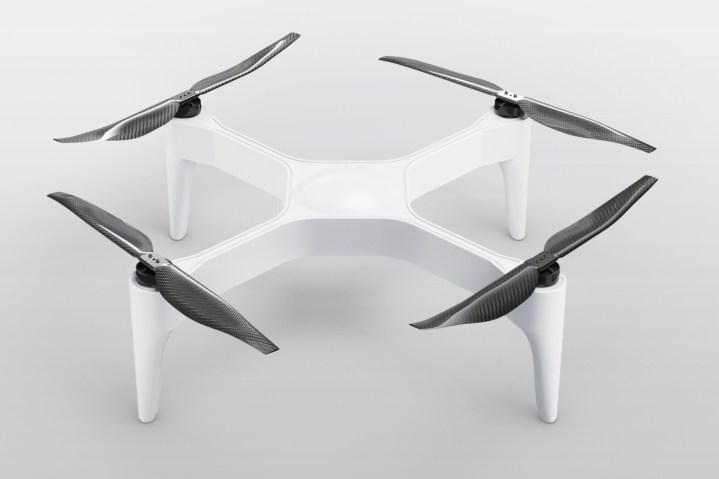A big annoyance for drone owners is the limited amount of time you can keep your bird in the sky before the juice runs out.
Many of today’s remotely controlled copters can only stay in the sky for around 30 minutes tops, so buying a couple of extra batteries is a necessity for most pilots when they order their machine.
But Impossible Aerospace says it can change all that.

The Sunnyvale, California-based startup on Monday, September 10 announced a battery-powered quadcopter capable of staying in the sky for up to two hours on a single charge, or 78 minutes with a 3-pound payload.
Designed by experienced engineers from the likes of Tesla and SpaceX, the US-1 drone is, in simple terms, a battery with propellors. Indeed, the “battery-first” approach was key in the machine’s development.
“The US-1 is more than just a drone — it’s the first aircraft designed properly from the ground up to be electric, using existing battery cells without compromise,” Spencer Gore, CEO of Impossible Aerospace, said in a release. “It’s not so much an aircraft as it is a flying battery, leveraging an energy source that doubles as its primary structure.”
The CEO said this is how electric aircraft will need to be built if they’re to compete with conventional designs and displace petroleum fuels in aviation. Gore hinted at plans to incorporate the technology into larger aircraft, a move that could result in a major shift in the aviation industry.
The US-1 drone
With its 26-inch frame, the US-1 has a top speed of 42 mph and tips the scales at at a hefty 15.7 pounds, making it about five times heavier than DJI’s Phantom 4 Pro — not all that surprising considering its larger lithium-ion battery.
Impossible Aerospace, which was founded in 2016, is aiming its machine at the commercial market and says it has already received orders from firefighters, police departments, and search and rescue teams. Important extras such as optical and thermal sensors are also part of the US-1’s package, and delivery to customers is expected later this year.
A bonus for companies with concerns about privacy and national security issues is that the US-1 will be engineered and assembled entirely in the U.S.
But at $7,500 for the basic model, the drone doesn’t come cheap. Whether potential customers will be attracted by the US-1’s extended flight time over, say, DJI’s Inspire 2, which offers 27 minutes of flight time at less than half the cost, could be key to the drone’s success.
Editors' Recommendations
- Here’s how you can get The Last of Us for free from AMD
- Apple’s new M2 MacBook Pro can’t handle the heat — should you still buy it?
- Steam Deck battery can drain in under 2 hours in some cases
- Pandemic drones that can detect fevers and coughing will soon take to the sky
- These smart batteries recharge in under 2 hours and outlast standard lithium-ion


